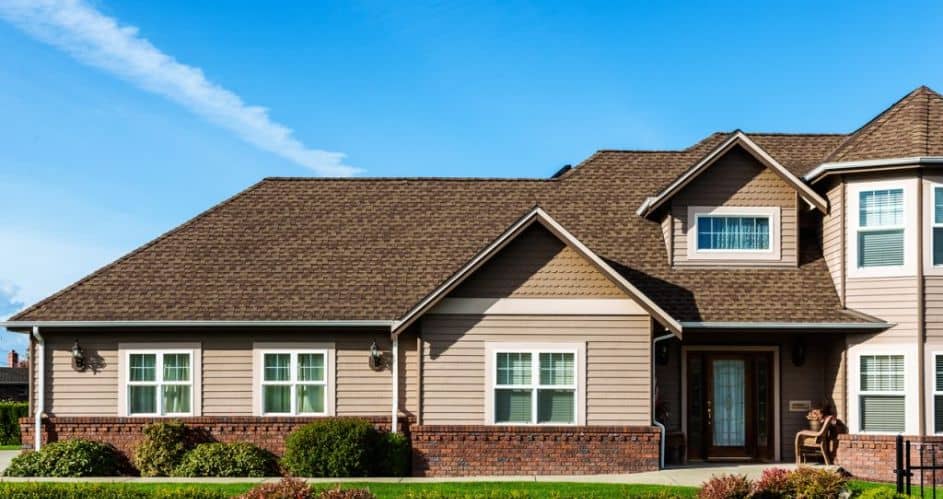
Your roof is one of the most critical components of your home, as it provides protection from the elements, insulation, and contributes to the overall aesthetics of your property. Understanding your roof and maintaining it properly is essential for homeowners.
In this article, we’ll cover the five key things homeowners need to know about their roofs, including inspections, materials, damage, ventilation, and the impact of weather and environmental factors.
Important Roofing Facts Every Homeowner Needs to Know
Regular Roof Inspections and Maintenance
Roof inspections play a vital role in keeping your home safe and well-maintained. Regular inspections can help identify potential issues early, preventing costly repairs and extending the lifespan of your roof.
As a general rule, homeowners should have their roofs inspected at least twice a year, preferably in the spring and fall. Additionally, it’s essential to have your roof checked after severe weather events or if you notice any signs of damage.
When hiring a professional inspector, make sure to choose someone with experience, proper licensing, and a solid reputation.
Basic maintenance tasks, such as cleaning gutters and removing debris, can also be performed by homeowners to prevent damage and prolong the life of the roof.
Roofing Materials
There are various roofing materials available, each with its own set of advantages and disadvantages. Some of the most common materials include:
Asphalt shingles:
These are the most popular choice among homeowners due to their affordability, ease of installation, and versatility in design. However, they have a shorter lifespan compared to other materials and may not be as energy-efficient.
Metal roofing:
Known for its durability and low maintenance, metal roofing can last up to 50 years or more. It’s also energy-efficient and can withstand severe weather conditions. However, metal roofs can be more expensive than other materials.
Wood shingles and shakes:
Wood roofing materials offer a natural, rustic appearance and can last up to 30 years if properly maintained. However, they require more maintenance and are less fire-resistant than other materials.
Tile roofing:
Tile roofs are long-lasting, fire-resistant, and energy-efficient. They can last up to 50 years or more, but their initial cost can be higher compared to other options.
When selecting roofing materials, consider factors such as durability, cost, energy efficiency, and aesthetics to make an informed decision that suits your needs and preferences.
Signs of Roof Damage and When to Repair or Replace
Detecting roof damage early can help you avoid costly repairs and maintain the integrity of your home. Some common signs of roof damage include leaks, missing or damaged shingles, sagging, and the presence of mold or mildew.
If you notice any of these signs, consult a professional to determine the extent of the damage and the appropriate course of action.
Deciding between repairing or replacing your roof depends on several factors, such as the age of the roof, the extent of the damage, and the overall condition of the roofing materials.
A reputable commercial roofing company can help you make this decision and provide you with an estimate for the necessary work. Ensure that the contractor you choose is licensed, insured, and experienced in handling the type of roofing material you have.
Proper Ventilation and Insulation
Adequate ventilation and insulation are crucial for maintaining a healthy, energy-efficient home. Proper ventilation helps regulate temperature and moisture levels in your attic, preventing issues such as mold growth, ice dams, and increased energy bills.
To ensure your home is adequately ventilated and insulated, consult a professional who can assess your home’s needs and recommend appropriate solutions.
If you’re located in the Springfield area and need assistance with your roof, consider reaching out to a reputable company specializing in roof repairs in Springfield MO.
They can help evaluate your roof’s ventilation and insulation, and provide expert guidance on how to optimize your home’s overall performance.
Impact of Weather and Environmental Factors on Roof Longevity
Various weather conditions and environmental factors can impact the lifespan and performance of your roof. Heavy rain, snow, wind, and sun exposure can all take a toll on your roofing materials over time.
Similarly, temperature fluctuations, humidity, and air quality can affect the integrity of your roof.
To protect your roof against these elements, make sure to conduct regular inspections and perform preventative maintenance, such as cleaning gutters, trimming overhanging branches, and replacing damaged shingles.
Additionally, consider using weather-resistant materials when installing a new roof or replacing your existing one. These materials can better withstand harsh conditions and may last longer than less durable options.
Conclusion
In conclusion, understanding and maintaining your roof is essential for homeowners.
By regularly inspecting and maintaining your roof, choosing the right materials, addressing damage promptly, ensuring proper ventilation and insulation, and considering the impact of weather and environmental factors, you can prolong the life of your roof and protect your home.
Prioritizing roof care and maintenance will not only preserve the integrity of your home but also contribute to its value and safety. Stay proactive in roof maintenance, and you’ll enjoy the benefits of a well-protected and well-maintained home for years to come.
